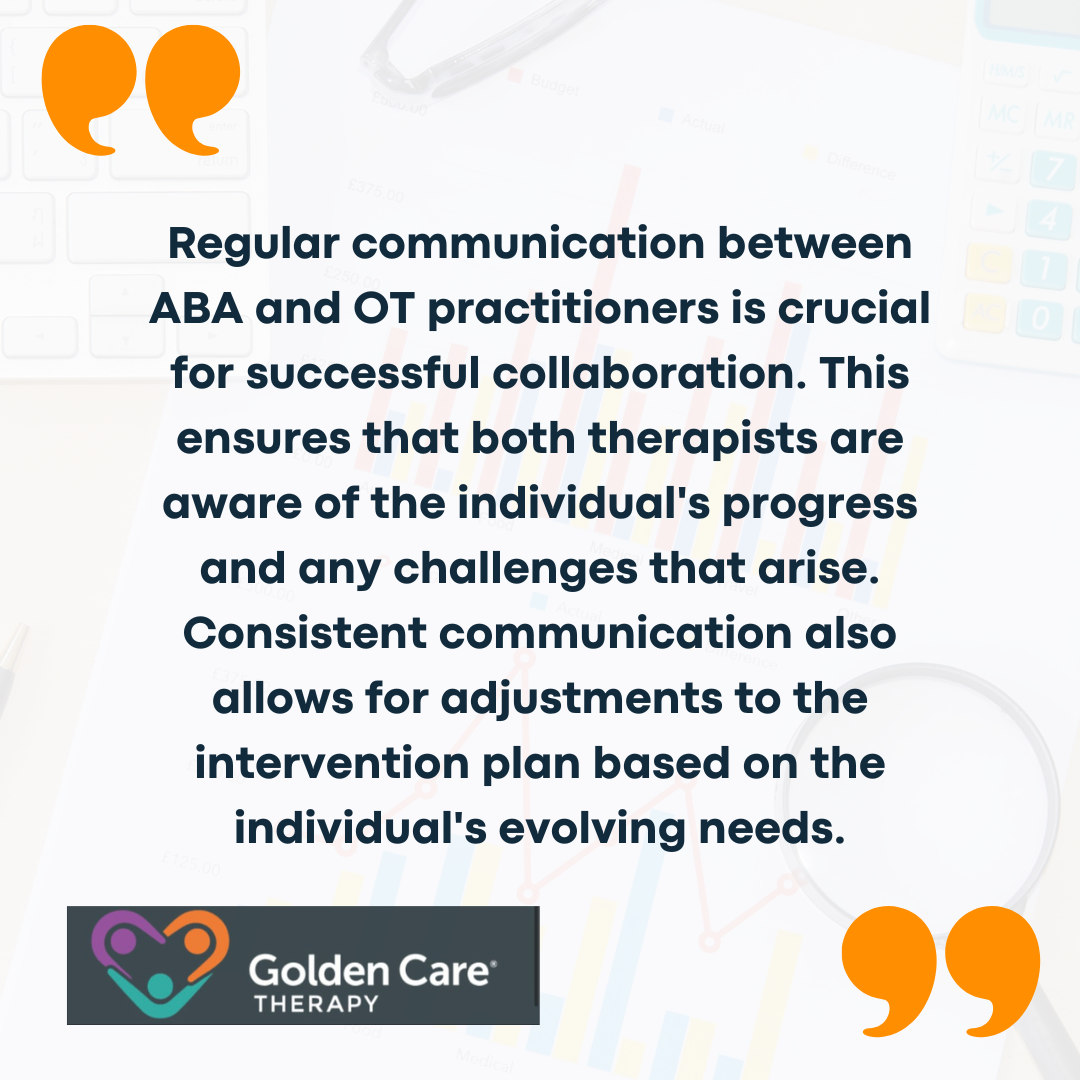Applied behavior analysis (ABA) and occupational therapy (OT) are two prominent therapeutic approaches that play crucial roles in supporting individuals with autism spectrum disorder (ASD).
When these disciplines work together, they offer a comprehensive, individualized approach to addressing the diverse needs of those with autism. This article delves into the synergy between ABA and OT, explaining how their combined efforts can lead to significant improvements in the lives of individuals with autism.

Understanding ABA and OT
Applied behavior analysis is a scientific approach that focuses on understanding and improving behavior. It involves the application of principles of learning and behavior to bring about meaningful changes in behavior.
ABA therapy is widely recognized for its effectiveness in teaching social, communication, and daily living skills to individuals with autism. By breaking down complex tasks into smaller, manageable steps, ABA therapists help individuals learn new skills and reduce challenging behaviors.
On the other hand, occupational therapy focuses on helping individuals achieve independence in their daily lives. Occupational therapists work on developing fine motor skills, sensory processing abilities, and adaptive behaviors.
For individuals with autism, OT can address challenges related to sensory sensitivities, motor coordination, and self-care activities. Through targeted interventions, occupational therapists aim to improve the overall quality of life and enhance participation in various activities.

The Synergy of ABA and OT
Combining ABA and OT creates a holistic approach that addresses both behavioral and functional needs. This collaboration is essential because individuals with autism often face challenges that span multiple domains.
By integrating the strengths of both therapies, practitioners can provide more comprehensive and effective support. Here’s how they both work hand in hand:
Addressing Sensory Processing Issues
Sensory processing issues are common among individuals with autism. These issues can significantly impact their ability to engage in everyday activities. Occupational therapists are experts in sensory integration and can design interventions to help individuals manage sensory sensitivities. ABA therapists can reinforce these interventions by using behavior strategies to encourage participation in sensory activities.
For instance, an individual with autism who is sensitive to loud noises might avoid social situations. An occupational therapist can create a sensory diet, which includes activities that help the individual manage their sensory sensitivities.
An ABA therapist can then use positive reinforcement to encourage the individual to participate in these activities, gradually reducing their avoidance behaviors.

Enhancing Communication Skills
Communication difficulties are a core characteristic of autism. ABA therapy is highly effective in teaching communication skills through techniques such as discrete trial training and natural environment teaching. Occupational therapists can complement these efforts by addressing the physical aspects of communication, such as fine motor skills required for writing or using communication devices.
For example, an ABA therapist might work on teaching a non-verbal child to use a picture exchange communication system (PECS). Concurrently, an occupational therapist can help the child develop the fine motor skills needed to handle and manipulate the picture cards.
This collaborative approach ensures that the child receives comprehensive support in developing effective communication skills.
Improving Daily Living Skills
Daily living skills, such as dressing, eating, and personal hygiene, are essential for independence. Occupational therapists focus on teaching these skills through structured activities and adaptive techniques. ABA therapists can reinforce these skills by using behavior strategies to increase the frequency and consistency of these behaviors.
Consider a scenario where an individual with autism struggles with dressing independently. An occupational therapist might develop a step-by-step plan to teach the individual how to put on clothes.
An ABA therapist can use reinforcement techniques to motivate the individual to practice dressing skills consistently. This combined approach ensures that the individual not only learns the skills but also generalizes them across different settings.
Research Supporting the Integration of ABA and OT
Research underscores the effectiveness of combining ABA and OT for individuals with autism. A study found that integrating sensory-based interventions from OT with behavior strategies from ABA led to significant improvements in sensory processing and behavioral outcomes in children with autism.
Another study highlighted the benefits of interdisciplinary collaboration in addressing complex needs. It emphasized that combining the expertise of ABA and OT practitioners can lead to more comprehensive and individualized interventions, resulting in better outcomes for individuals with autism.
Practical Considerations for Integrating ABA and OT
Effective integration of ABA and OT begins with collaborative goal setting. Both therapists should work together to identify the individual’s strengths, challenges, and priorities. By establishing common goals, they can create a unified intervention plan that addresses the individual’s needs comprehensively.

Also, each individual with autism is unique, and their intervention plans should reflect this. ABA and OT practitioners should tailor their approaches to the individual’s specific needs and preferences. By creating individualized plans, therapists can maximize the effectiveness of their interventions and promote meaningful progress.
As research continues to highlight the benefits of interdisciplinary collaboration, it is essential for ABA and OT practitioners to work together to create comprehensive, individualized intervention plans. Doing so ensures that individuals with autism receive the support they need to thrive in various aspects of their lives.
For those seeking support in an ABA center in New Jersey, New York, Georgia, and Indiana, Golden Care Therapy is here to help. Contact us today to book an appointment or learn more about our services.
Sources:



